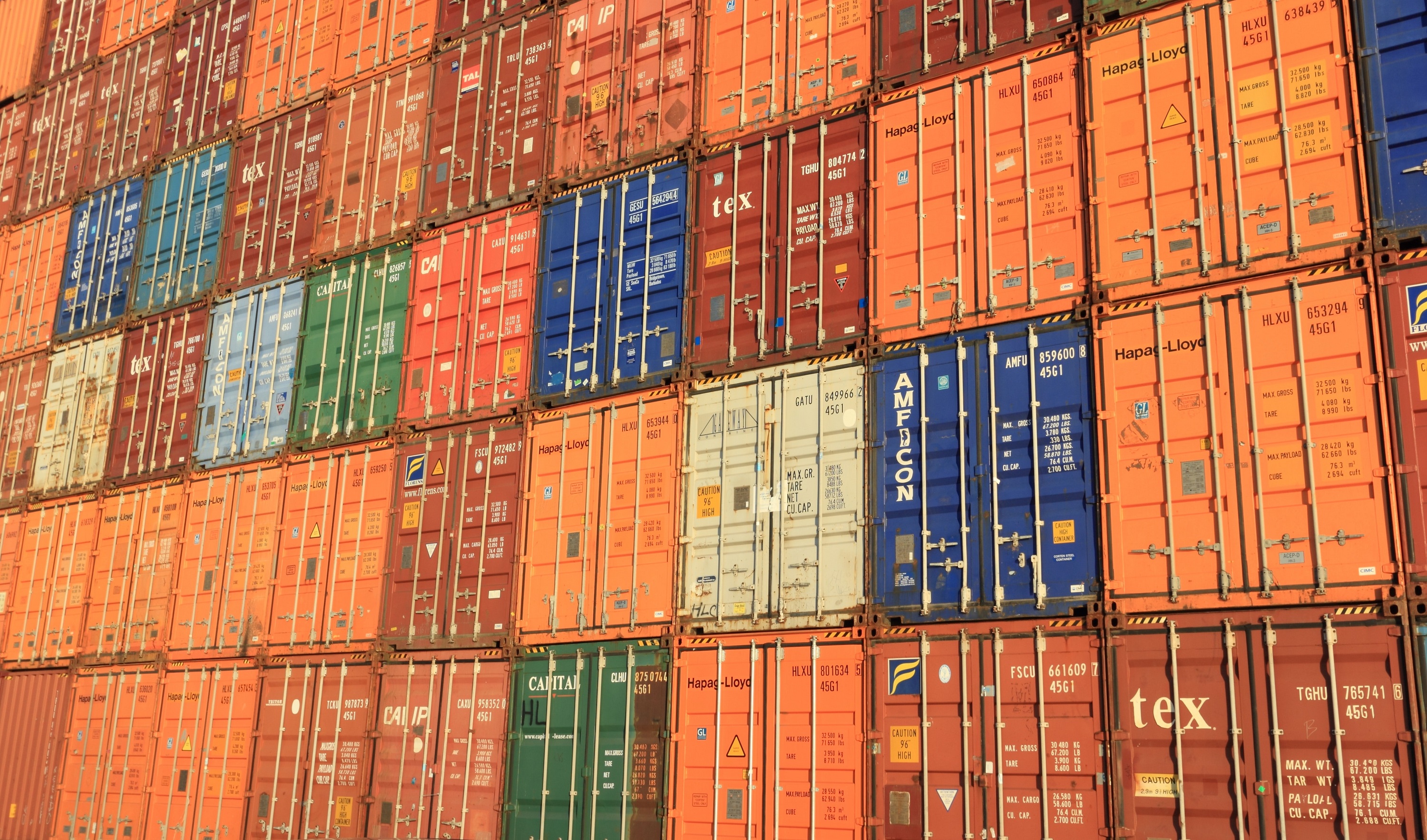USMCA and eCommerce
Table of Contents:
What is the USMCA?
USMCA Updates and Revisions
Impact of USMCA on eCommerce
USMCA Benefits to Cross-Border Traders
USMCA and eCommerce: How GeTS Can Help
Job Scam Alert:
This is to notify you that we have been alerted of job scams misusing the name of Global eTrade Services (GeTS). We would like to emphasize that there is no active, ongoing recruitment under the brand name of GeTS as we now operate under our parent company, CrimsonLogic. Please read the full disclaimer here.
Table of Contents:
What is the USMCA?
USMCA Updates and Revisions
Impact of USMCA on eCommerce
USMCA Benefits to Cross-Border Traders
USMCA and eCommerce: How GeTS Can Help
The recently ratified United States Mexico Canada Agreement (USMCA), also called NAFTA 2.0, is scheduled to come into effect in July this year. The updated trade deal introduces new laws that impact ecommerce participants and traders in North America. Read on for more on USMCA and eCommerce or digital trade.

The USMCA is a free trade agreement between Canada, Mexico and the United States that has been ratified by each country. The deal finalizes the revisions made to NAFTA in 2017 and 2018, including negotiations focused on automobile manufacturers and dairy, egg and poultry farmers.
The USMCA is a considered a revision and modernization of NAFTA, with many significant changes introduced. It contains new regulations on labor and environment, macroeconomic policy, standards harmonization, and digital trade.
On November 30, 2018, leaders of the United States, Canada and Mexico signed the proposed USMCA, a revised and modernized version of the NAFTA, which has been in place since 1994. On December 10, 2019, the three countries agreed to an amendment process for the USMCA.
On December 13, 2019, The Trump administration proposed implementing legislation to Congress, and the USMCA Implementation Act (H.R. 5430) was introduced in the House of Representatives. On January 16, 2020, the full Senate passed the legislation.
President Trump signed the legislation into law on January 29, 2020. Canada ratified the agreement on March 13, 2020. On April 3, 2020, Mexico announced it was ready to implement the agreement. The USMCA is scheduled to come into effect on July 1, 2020.
The USMCA essentially updates the 25-year old NAFTA and introduces new regulations in key areas. Multiple key revisions include labor and environmental provisions, changes to the original text regarding dispute settlement, intellectual property rights (IPR) protection, and steel and aluminum requirements in the motor vehicle industry rules of origin.
Automobiles must have 75 percent (up from 62.5 percent under NAFTA) of their components manufactured in Mexico, the US, or Canada to qualify for zero tariffs.
40 to 45 percent of automobile parts must be made by workers who earn at least $16 an hour by 2023. Mexico agreed to pass new labor laws to give greater protections to workers, including migrants and women, and make it easy for workers to unionize.
The agreement extends the terms of copyright to 70 years beyond the life of the author (up from 50).
U.S. farmers get more access to the Canadian dairy market.
Protections for internet companies so they are not liable for content their users produce
Zero duties on electronic products like music and e-books
The terms of the agreement expire after 16 years, and the deal is subject to a review every six years, a time when parties can decide to extend the USMCA.

NAFTA was created in 1994 before the Internet was born, so it lacks digital provisions. The USMCA has provisions for the digital era, including setting limits on source code disclosure requirements, restrictions on data localization requirements, and provisions on cross-border data flows.
In terms of cross-border trade, the USMCA:
Prohibits customs duties on electronically transmitted products like software, music, videos, games, and e-books
Sets a De Minimis customs threshold for duty free treatment at $117 for Canada and Mexico
Sets a tax-free threshold at $50 for Mexico and CAD$40 for Canada
Sets new rules governing textile trade, specifically widespread changes to rules of origin
States that each country can assist each other by sharing information during origin verifications
Changes rules on the completion of Certificates of Origin. Under NAFTA, the exporter was responsible for completing the certificate, but it can now be completed by the exporter, producer, or importer.

To facilitate cross-border trade, the United States, Canada and Mexico agreed to raise de minimis shipment value levels. Canada will raise its de minimis value for the first time in decades, from CAD$20 to CAD$40. Canada will also provide for duty-free shipments up to CAD$150. Shipments valued at over CAD$40 will be subject to local GST/HST, but duties are only applied to those above CAD$150.
Canada will also allow 90 days after entry for the importer to pay for taxes. Meanwhile, Mexico will continue to provide US$50 tax-free de minimis and duty-free shipments up to the equivalent level of US$117 for express shipments. The U.S. maintains the $2,500 threshold for informal entries, which require fewer data elements to be submitted to customs by the importer and carrier.
In Canada, Mexico and the U.S., all shipments under or equal to the de minimis value have minimal entry and other customs documentation requirements. This would encourage businesses, particularly small and midsize enterprises (SME), to participate in the global ecommerce market.
For example, informal entries (including low-value or Section 321 shipments in the U.S.) allow for express shipments to enter with reduced paperwork. The majority of ecommerce parcels enter the U.S. as Section 321, a type of release option designed to speed up cargo clearance for shipments valued at $800 or less.
An entire chapter of the USMCA is devoted to the new provisions created for textile trade and changes to rules of origin. Similar to automakers, this incentivizes the use of domestic textiles, yarns, and fabrics by limiting rules that allow for some use of non-NAFTA inputs in textile and apparel trade and requiring most inputs and finished products to be made in the region to qualify for entry benefits.
The USMCA allows better cooperation among the three countries when it comes to verifying certificates of origin. This could mean more collaboration between the three customs agencies and the creation of new systems to streamline processing.

The USMCA has numerous benefits to traders who already participate in ecommerce or those who are looking to enter the market.
Facilitate trade. The trading community will be able to access an online database of customs information, including regulations, tariffs, taxes, and duties to help improve understanding and cut through red tape.
Reduce customs paperwork. Customs agencies generally require a lot of cargo information from importers, exporters, customs brokers and other trade participants. With the increased de minimis value, more shipments will be exempt from lengthy documentation requirements. Shippers and carriers can increase the volume of ecommerce parcels that they handle each day knowing that it will clear customs quickly.
Reduce costs. Reduced paperwork means reduced administrative costs and customs fees for trade participants. It will be cheaper and easier for SMEs in other regions to enter the North American ecommerce market due to higher de minimis thresholds and fewer data requirements. Carriers transporting low-value shipments also stand to benefit from lower costs and faster customs processing.
Enhance the digital ecosystem. An important provision in the USCMA prevents any party from passing laws that restrict the cross-border flow of data. Provisions to protect cross-border data flows and limit data localization requirements improves collaboration, visibility, and access to information among digital trade participants.

Global eTrade Services (GeTS) is a leading provider of trade facilitation solutions for the North America market. From trade declaration (eManifest, entry and entry summary, export declarations, permits, certificates of origin) to trade advisory, GeTS offers advanced, flexible solutions based on the software-as-a-service model. All products can be subscribed on the fly and integrated with existing systems.
Learn more by visiting our USMCA (NAFTA 2.0) Ratified - Good news for eCommerce or Digital Trade and eCommerce page or contact us today!
CBP Entry Type 86 Clearance for eCommerce Shipments
What Importers Need to Know About Section 321 Entry Type 86
ACE Air and Section 321 Filing for eCommerce Goods
How to File ISF for your Inbound Cargo
Importer Security Filing (ISF)
ACE Ocean for eCommerce Shipments
New CBP Penalties for Cross Border Trucks
CBP Begins ISF-5 (Importer Security Filing) Enforcement
Avoid Penalties! Here are the 10+2 ISF Time Frames to Remember
US Electronic Manifest 10 + 2 ISF (Importer Security Filing)